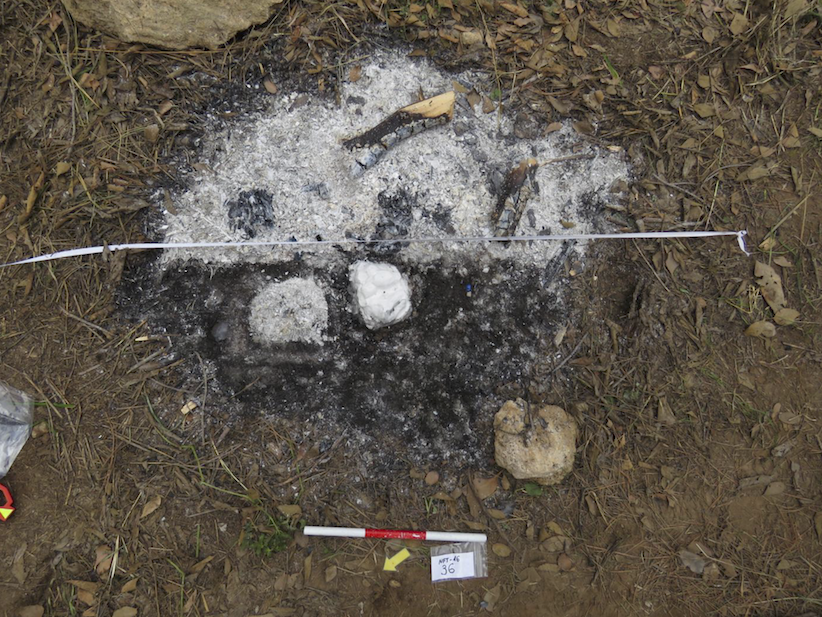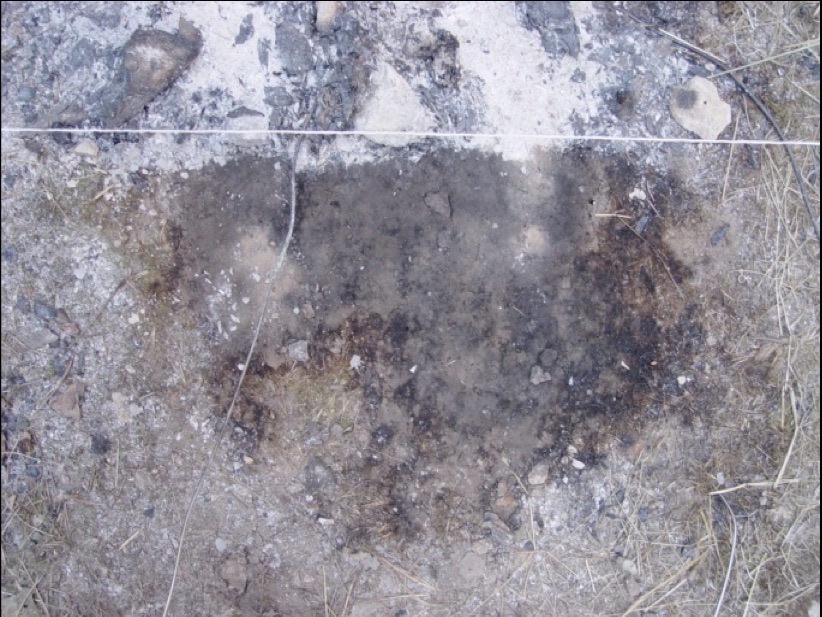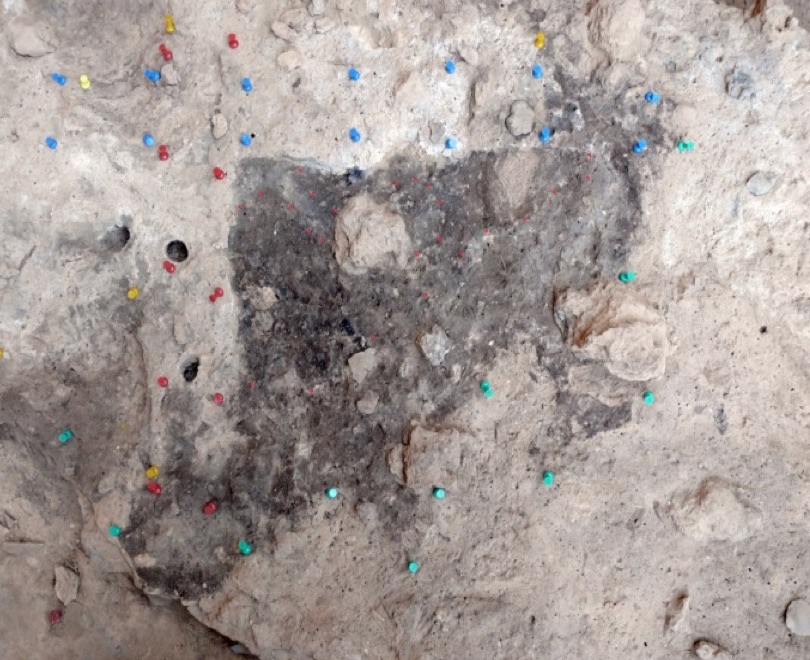

Advance in our knowledge on Neanderthals and their demise has been hampered by the fragmentary and inorganic nature of the archaeological record. At the same time, the sedimentary deposits from Neanderthal sites remain largely unexplored and conceal invaluable archaeological information at the microscopic and molecular scales.
Our main goal is to identify archaeologically relevant microscopic and molecular residues preserved in sediment from Neanderthal sites.

We target Neanderthal combustion features, which are direct transmitters of behavioral and paleoenvironmental information. Our focus is on black facies, which often represent the burnt ground beneath the fire; the human living floors on which fires were made. Therefore, they are rich in charred (organic) residues of past human activity and the natural environment.


Black layers of experimental fires.


Black layers from Middle Palaeolithic fires.
We investigate these residues using microscopic and spectroscopic techniques through a contextual approach: Undisturbed archaeological sediment blocks and thin sections are our navigation maps, ensuring high-resolution spatial and temporal control. Our main analytical techniques are optical and Raman microscopy, FTIR spectroscopy and lipid analysis using GC-MS and GC-IRMS.







Carolina Mallol leads PALEOCHAR. She is a geoarchaeologist investigating the microscopic and molecular sedimentary archaeological record to approach past societies and their environments. She is currently exploring prehistoric fire remains using multiple techniques.

Lucia Leierer is a PhD student at ULL. She works on the archaeological aspects of PALEOCHAR, trying to decipher Neanderthal behavior from the combustion structure remains.

Rory Connolly is a PhD student at ULL. His research within PALEOCHAR explores the potential of microscopic and molecular organic matter for investigating role of climate in Neanderthal social and cultural evolution.

Tammy Buonasera is a post-doc researcher for PALEOCHAR investigating the deposition and preservation of pyrolyzed animal fats in Middle Paleolithic hearth sediments. Her work employs molecular and isotopic techniques like GC/MS and CSIA to identify animal residues.

Caterina Rodríguez is a MD in Biotechnology and PhD in organic chemistry, and she is our Thin Section Technician. Her current research is about new methodologies for the impregnation process.

Our PALEOCHAR research is carried out at the AMBI Lab, designed for joint soil micromorphology and lipid analysis. It consists mainly of a microscopy facility with several petrographic microscopes and a chemistry facility equipped with a Pyr-GC-MS and a Pyr-GC-IRMS.